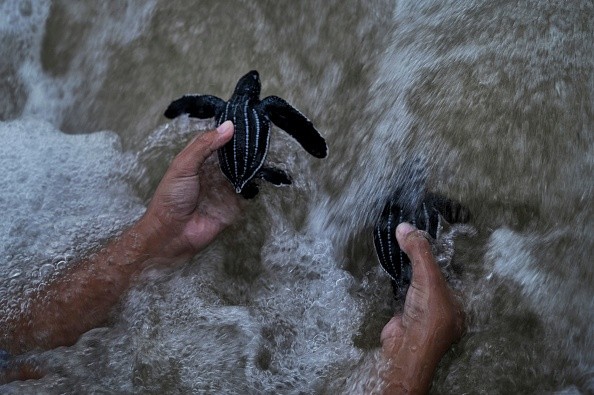According to a new research, turtles can suffer from transient hearing loss as a result of excessive underwater noise.
This phenomenon, which has previously been observed in other marine creatures such as dolphins and fish, was not commonly recognized for reptiles, and it highlights another possible concern for aquatic turtles.
Passing ships and offshore development can contribute to this high volume of sound, which is known as underwater noise pollution.
Noise pollution to marine life
Noise pollution in the water has risen considerably over the previous few decades. Because most marine animals rely heavily on sound for survival, this form of pollution is especially harmful to marine biodiversity, as cited by Earth.
It not only interferes with the basic life activities of these animals, but it also causes death in some circumstances.
The effects of noise pollution are increasingly being documented across all sorts of ecosystems, thus we must take action now to enhance the ocean soundscape and allow some marine species to recover.
Animals can perish only hours after being exposed to excessive underwater noise. For example, whales can die quickly enough because of strandings.
Beaching themselves immediately following a tactical sonar exercise is a very regular environmental consequence of noise pollution.
The mass stranding of giant squids in Spanish coastal regions between 2001 and 2003 demonstrated the serious consequences of noise pollution on marine life.
One of the numerous ocean noise pollution consequences is the displacement or relocation of marine species to a newer area, as per Marine Insight.
While this may appear to be a survival mechanism, studies on these animals have shown that most animals fail to acclimate to their new environment, resulting in a loss of diversity in many regions.
Read more: Noise Pollution: Why We Should Embrace It
Turtles are used for experimentation

According to ScienceDaily, it is worth noting that transitory hearing loss in animals is a natural physiological condition. It's currently found in mammals, birds, fish, and reptiles.
However, in this scenario, it is vital to emphasize that it can be a predictor of higher, more damaging noise consequences, such as profound hearing loss or auditory impairment.
The researchers conducted trials on two non-threatened species of freshwater turtles to carry out the investigation.
They employed a minimally invasive device put just beneath the skin above a turtle's ear to detect the tiny neuronal voltages produced by the turtles' auditory organs when they hear noises.
The technology tests hearing quickly, in a matter of minutes, and is comparable to how hearing is evaluated noninvasively in human neonates.
They first identified the lower threshold of the turtles' underwater hearing and the tones (frequencies) they heard best before exposing them to strong white noise (equivalent to the sound of radio static).
The ocean is a 'silent world'
The sensitivity of different marine animals to ocean noise pollution varies.
While cetaceans, such as whales and dolphins, may be more resistant, soft-shelled species, such as mollusks, prawns, and fish, are much more vulnerable.
It is important to note, however, that noise pollution in the ocean has been shown to hurt as many as 24 cetacean species.
In all, 55 marine species have been seen to have suffered as a result of exposure to the sound of varied frequencies. These include sperm whales, grey whales, mink whales, pygmy sperm whales, killer whales, sea bass, pink snappers, goldfish, cod, haddock, bluefin tuna, squid, lobster, and brown shrimp, among others.
© 2026 NatureWorldNews.com All rights reserved. Do not reproduce without permission.





